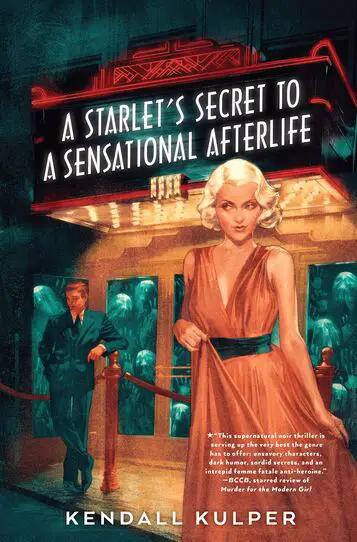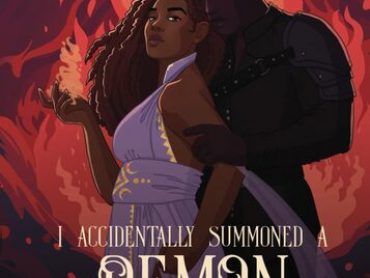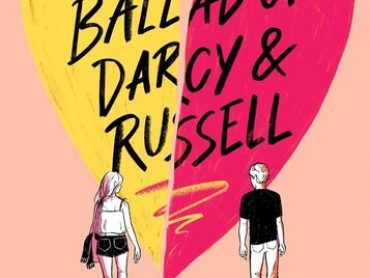Kendall Kulper is the author of A Starlet’s Secret to a Sensational Afterlife. A Starlet’s Secret to a Sensational Afterlife follows Eighteen-year-old Henrietta who arrives in Los Angeles in 1934 with dreams of trading her boring life for stardom . The novel explores romance, vengeance, and the Golden Age of Hollywood. YEM was able to speak with Kendall about writing a book in the 1930’s, where the inspiration came from, and being fascinated by Old Hollywood.
Young Entertainment Mag: When did you first know that you wanted to be an author?
Kendall Kulper: I’m pretty sure as soon as I knew books were written by actual people, I wanted to be one of those people. Honestly, I can’t even remember a time before I wanted to be an author!
YEM: Why did you decide to set a book in the 1930’s?
Some of it was practical: A Starlet’s Secret is a companion novel to my book Murder for the Modern Girl, which I’d set in 1928. Starlet follows the younger sister of Modern Girl’s main character, and she’s eighteen in 1934. It wasn’t until I realized I could write a 1930s spinoff that I got really excited about the era.
YEM: Where did you get your inspiration for A Starlet’s Secret to a Sensational Afterlife from?
Once I decided to write a book in 1934, I thought about what I could focus on. When I was drafting this book, the MeToo movement was in full swing, and it had me thinking back to the beginning of the film industry: how did Hollywood become so rampant for abuse, and why had very little improved in nearly a hundred years? I started looking into how young women experienced the film industry in the 1930s and came across a Chicago Tribune article written at the time by a veteran investigative reporter who quoted an anonymous law enforcement official that three hundred girls a month went missing in Hollywood. It made me wonder what happened to those girls, what their stories were, and how difficult it was—then and now—for them to get justice.
YEM: Is old Hollywood something that you have always been fascinated in?
I have! I always loved old movies and learning about the film sets and how these movies were made. The actors and actresses just seemed to be the absolute height of glamor, but once you kind of scratch the surface, you understand how completely manufactured those images are. In all my research, I don’t think I came across a single actor or actress who went through stardom and wasn’t massively negatively affected in some way: nearly every single one of them faced problems ranging from abuse, exploitation, addiction, financial ruin. The contrast between these people who were worshipped, whose lives were idealized and romanticized, with the reality of what they experienced is so fascinating to me.
YEM: What is your writing process like?
It really depends on where I am. When I start a project, I ask myself a ton of questions: why do I want to tell this story, who are my characters, what do they want, what do I want readers to take away? From there, I write little snippets that might or might not end up in the manuscript, just to figure out my characters’ voices, then I put together a synopsis detailing the plot of the book.
Because all my books are based on real historical events, I also do a ton of research. I like to take in as much as possible about a time period—through books, movies, TV shows, photographs, museums, interviews—and then let it just kind of become background noise while I write. Research is also where I tend to find a lot of important details to flesh out characters, settings, or plot.
When I comes time to write, I shoot for about two thousand words a day. That’s usually the length of one of my chapters, and it’s a nice amount without feeling too overwhelming. I edit as I go, usually rereading the chapters I’ve already written before writing the next one. Then it’s a ton of edits! I do a few rounds on my own and a few rounds with my editor, and that’s where the book really comes together.
On a practical, schedule level, I tend to get around four hours a day to focus on a project; the rest of the time I’m handling different logistics (today I designed and ordered bookmarks, filled out some forms for my publisher, and answered this interview!). It doesn’t seem like a ton of time but surprisingly I find unless I’m super, super into my work, I tend to get a little burned out after four hours.
YEM: What was something you learned about yourself as you were writing A Starlet’s Secret to a Sensational Afterlife?
My last book, Murder for the Modern Girl, was all about how if you work hard for justice and the right people pay attention, you can enact real change. All that was based on history, but when I set out to write Starlet, I was stuck with this problem that things didn’t get better, there was no moment of justice or victory. It actually was so hard for me to figure out—how to write a hopeful story when there were no historical moments of victory to draw on—that I had to set the project aside for a while.
It wasn’t until I personally connected more with issues of social justice that I better understood that there is no finish line when it comes to fighting for justice. A lot of times, there’s just continuing to push forward, inch by inch, in the hopes that other people will build on what you’re doing. But where do you find that strength to keep going? I came across a line from a poem by Toi Derricote: “joy is an act of resistance,” and I immediately knew I wanted this book to be about fierce, powerful joy. The joy my main character, Henrietta, takes from her life—her friends, her dedication to art, her sense of curiosity and adventure—is the fuel that allows her to withstand the dark things happening in Hollywood and continue pushing for justice. It’s been a mindset that has influenced my own feelings when faced with the seemingly insurmountable problems these days and helped me understand my own activism.
YEM: What do you hope readers can take away from A Starlet’s Secret to a Sensational Afterlife?
I hope readers can take away what I learned writing this book: how to approach these huge problems in the world not with a feeling of cynicism or apathy or dread, but with joy for the things you love and care about and hope for the future. I thought a lot about the teenagers who might pick up this book, the way they can bounce between feeling so hopeful and so depressed about the massive problems about the world. But the message of the book is that even if huge, structural problems may take longer to unravel, you can still push in small ways, celebrate the tiny victories, and find strength through joy to keep working toward what you believe in.
YEM: What advice do you have for those who want to become writers?
Read. There is no writing teacher like other books. Read what you’re interested in, read what you would never pick up. Read what’s popular, read something random and obscure. Always think about why you like a book, what works for you or doesn’t.
There’s also no better way to learn how to write than by writing. Writing a manuscript, start to end, will tell you how to write a manuscript. I also generally tell new writers that that first manuscript is probably going to be garbage! It’s often easier to just throw out that first manuscript and start over with something new, knowing everything you learned, than to try to salvage it.
So much of writing is about letting go—you cut things when you edit, you have to accept that some manuscripts won’t get published or some books won’t be as popular as you hoped. It’s hard to pour yourself into a piece of work and then not take it personally if it doesn’t resonate in the way you hoped, but I think it’s maybe one of the most important lessons about writing professionally. I would really caution hopeful writers to think about if publishing is something they can handle: you deal with constant rejection, a lot of very public criticism, and a ton of competition. For a lot of people, publishing is just not worth it, and that’s completely okay! Anyone who writes is a writer, whether or not they’ve been published.
YEM: Is there a writer that has always inspired you?
The nonfiction author Deborah Blum literally inspired this series, with her very excellent books Ghost Hunters (about the search for proof of the afterlife in the early 1900s) and The Poisoner’s Handbook (about the birth of forensic science in Prohibition NYC). I take a lot of inspiration from nonfiction writers (I also love Mary Roach, Erik Larson, Laurel Thatcher Ulrich, and Nathaniel Philbrick), because I’m always looking to learn new things and my sense of curiosity is probably my biggest driving force when it comes to thinking about what I want to write next.
YEM: What genre do you hope to write next?
I think I’ll probably always write in the historical realm, just because I really love history and learning more about different times. I think there’s so much to learn about our present by the way we interpret and reevaluate history, and I love combining history with different genres—fantasy, thriller, romance.
YEM: What is a scene or quote in A Starlet’s Secret to a Sensational Afterlife would you say is your favorite?
My absolute favorite quote is all the way on the very last page, but no spoilers! Instead, my favorite scene is when my starlet, Henrietta, and reluctant grumpy stuntman, Declan, meet and do a screen test together. It was a scene I couldn’t wait to write and poured so much research into. It was also this magical moment when my two leads finally interact and see each other and lay the groundwork for their relationship—good and bad. I based the scene on a real screen test between James Dean and Lois Smith for East of Eden, where they basically just stare at each other and somehow have lightning-bolt chemistry, but also on this student film my now-husband and I were part of in college when we’d just started dating and had to stare into each other’s eyes for five minutes (college!). It was such an intense but sort of weird experience and it was fun to put my own memories with my husband into that moment.
YEM: Are you working on writing any other books write now?
Yes! In addition to a stack of projects that will hopefully turn into real books someday, I have a book under contract that hasn’t been announced yet. I don’t think I can say much about it, but—if you like Starlet and Modern Girl’s blend of history, romance, mystery, and thriller, I bet you’ll like this one, too. 🙂





